Learn what to do if your iPhone keeps disconnecting itself from a Wi-Fi network and starts using cellular data instead.
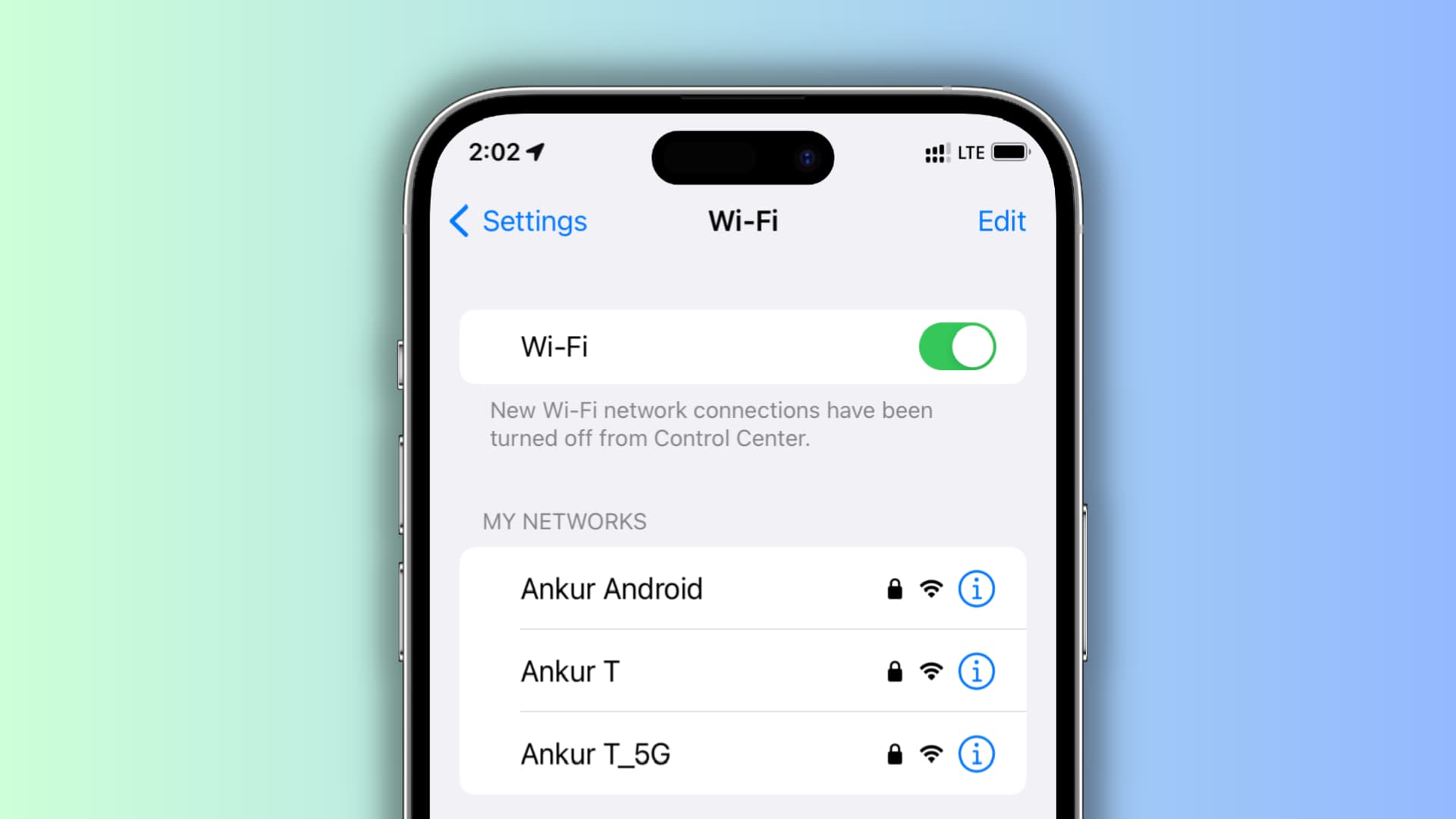
Your iPhone or iPad may sometime stops using Wi-Fi and automatically switch to cellular data. As a result, you may experience slower download speeds, paused background tasks like app updates and Photos syncing, and limited features in apps. This can also quickly exhaust your limited cellular data plan. The following tips will help resolve this issue and stop your iPhone from switching from Wi-Fi to cellular.
Turn off Wi-Fi Assist
The most obvious reason your iPhone decides to stop using Wi-Fi and fall back on cellular data is a feature called Wi-Fi Assist. When enabled, iOS automatically switches to mobile data when the Wi-Fi speed or range is not up to the mark. However, Wi-Fi Assists can sometimes take over even the Wi-Fi speed is perfectly fine for normal browsing and social media, even if it shows one signal bar.
You can fix this by disabling Wi-Fi Assist in Settings.
- Open the Settings app on your iPhone.
- Tap Cellular (or Mobile Service or Mobile Data in certain countries).
- Scroll to the bottom of the page and turn the Wi-Fi Assist option off.
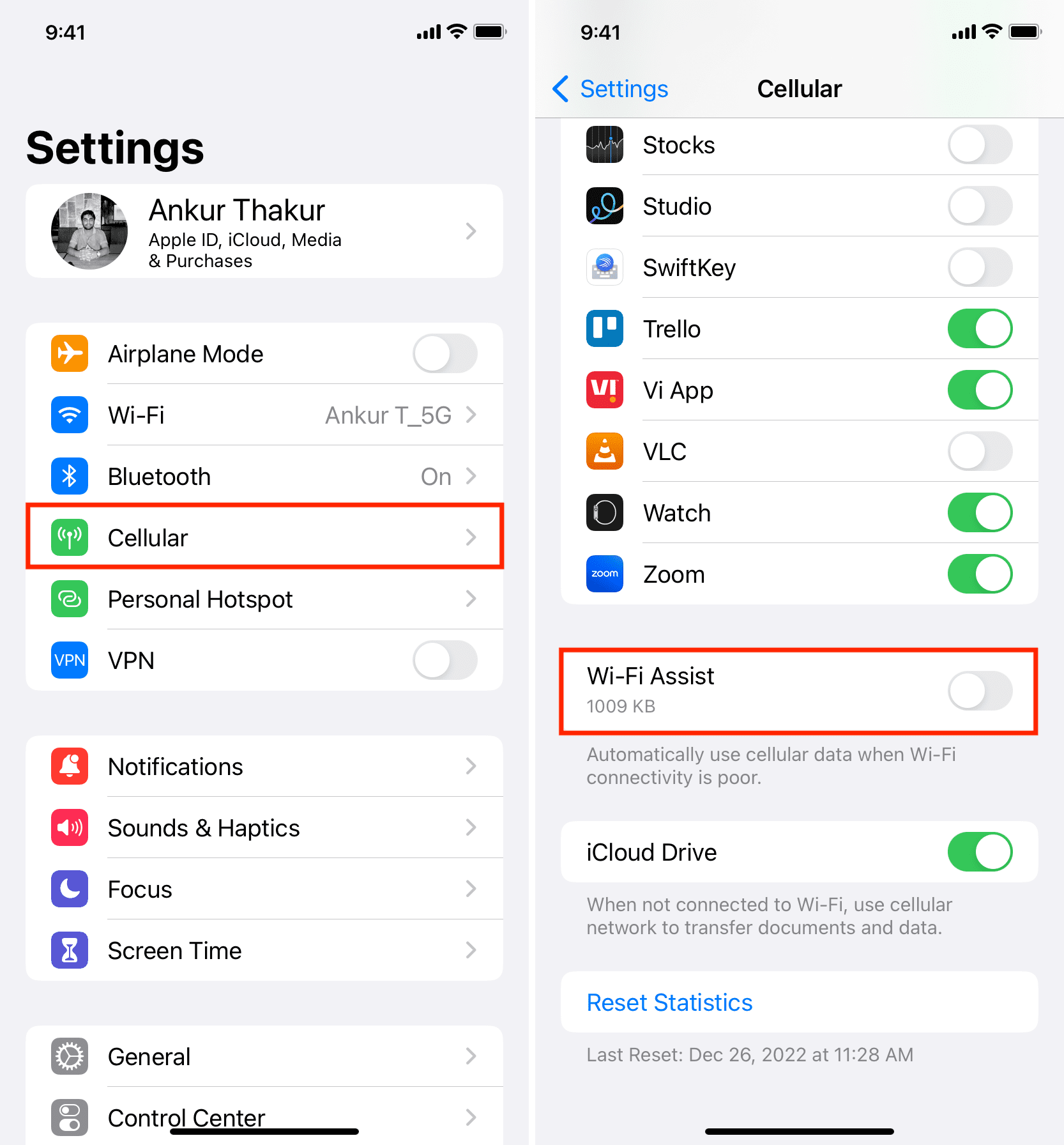
Switch off Wi-Fi Low Data Mode
Low Data Mode, available for both cellular data and Wi-Fi, can optimize data usage. If enabled, iOS stops using Wi-Fi when you lock the device in order to save bandwidth, which also causes it to fall back on cellular data. To fix fix, turn off the Low Data Mode option for your Wi-Fi network.
- Open the Settings app and select Wi-Fi.
- Tap the info button ⓘ next to the name of the connected network.
- Turn off the Low Data Mode switch.
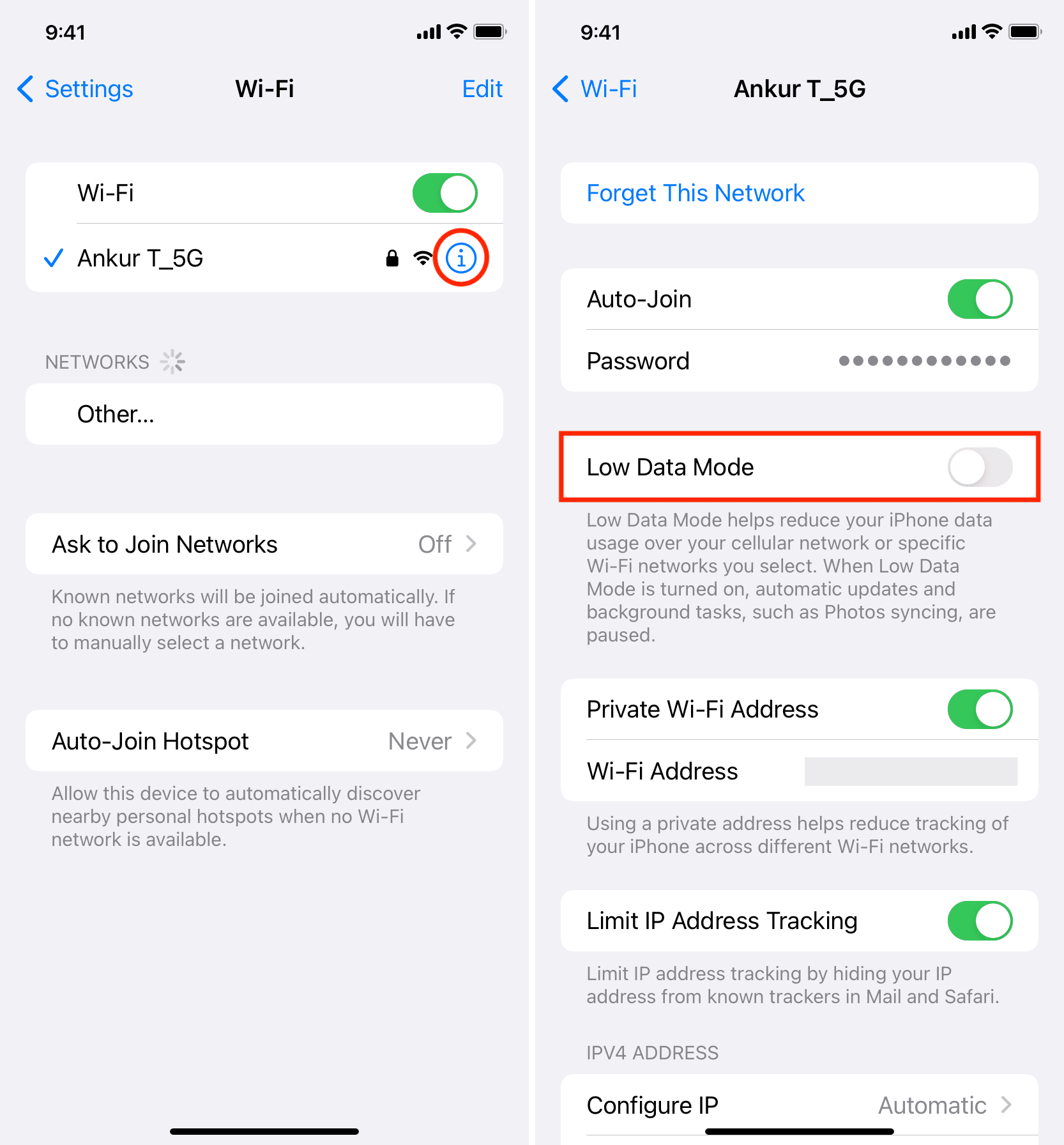
Use the 2.4GHz band instead of 5GHz
Some Wi-Fi routers support both 2.4GHz and 5GHz bands.
- The 5GHz band offers faster speeds but has limited coverage and is easily obstructed by doors and walls.
- On the other hand, the 2.4GHz band can be a bit slow, but its range is much longer as the 2.4GHz signal better penetrates through hard objects and concrete.
I’ve set my iPhone to always prefer the faster 5GHz Wi-Fi, and it works great for my home. However, it disconnects from my Wi-Fi when I go to our storeroom at a distant part of my house, showing only the standard 2.4GHz band when I’m there. If I need to spend some time in that room, I manually pick the 2.4GHz network on my iPhone.
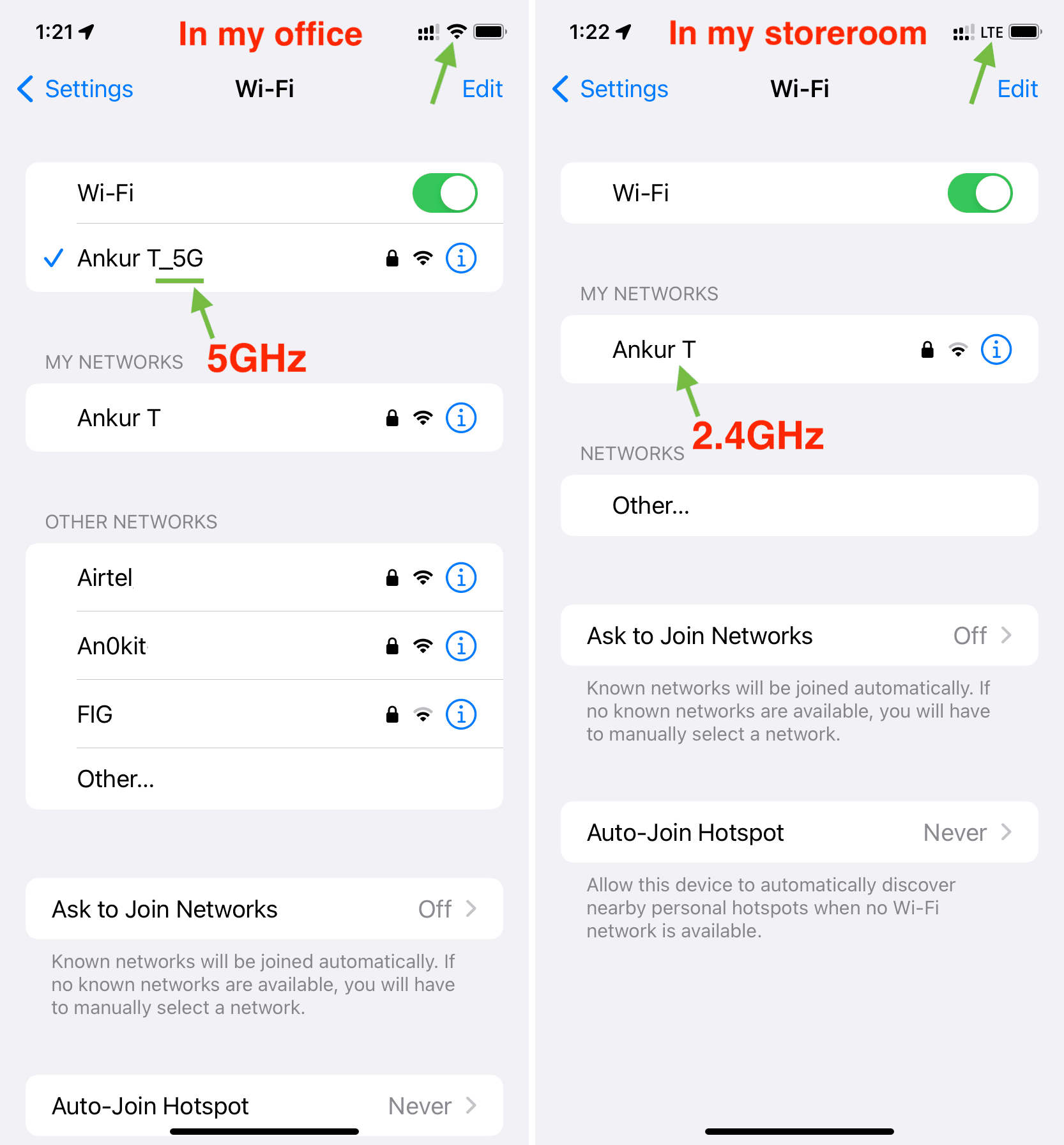
If you frequently face a similar scenario, set your iPhone to always prefer the 2.4GHz network over the 5GHz one. For most purposes (except huge file downloads), you won’t notice a significant difference and you’ll enjoy extended coverage.
Make sure you’re in Wi-Fi range
Many routers produce a 2.4GHz signal which can reach between 150 feet (45 meters) to 300 feet (92 meters). However, the range can drop to just 50 feet (15 meters) on the 5GHz band. Be sure you’re within the range of your router or your iPhone will stop using Wi-Fi and switch to cellular data. And if you’ve turned off cellular data in Settings, you won’t have internet connectivity.
Restart your Wi-Fi router
Your router may drop Wi-Fi connections because of a bug. Before moving to the remaining solutions, be sure to turn your router off by unplugging it and waiting at least 30 seconds before turning it back on. Doing so will reinitialize its operating system and fix most temporary problems.
Make sure your Wi-Fi has internet access
If the Wi-Fi network doesn’t have internet access, your iPhone can ignore it automatically and switch to cellular data instead. To check if the Wi-Fi network has internet connectivity, go to the Settings app > Wi-Fi. If it say ‘No Internet Connection‘ in yellow below the connected Wi-Fi network name, here’s how to fix it.
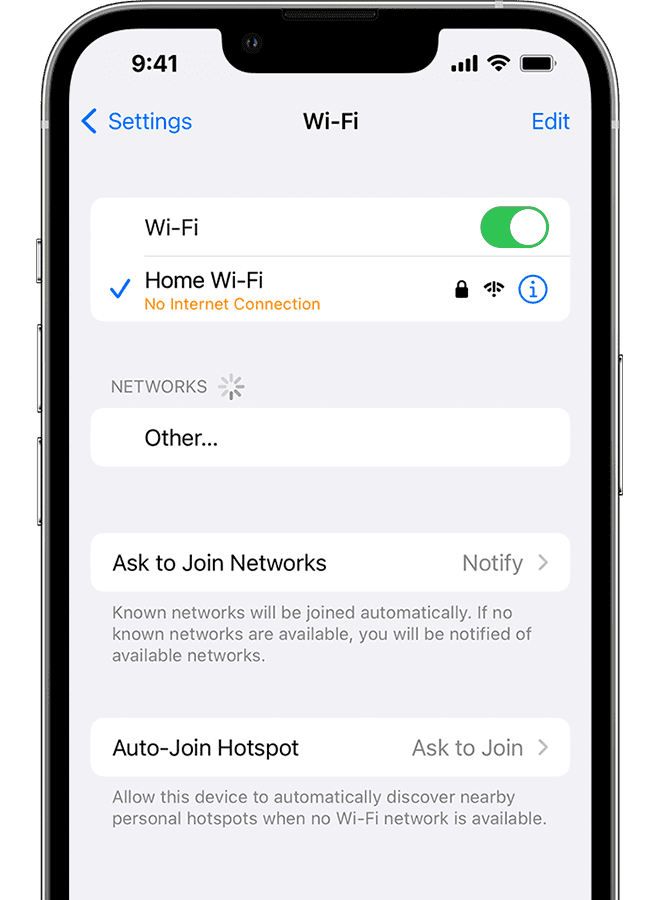
Restart your iPhone
Like all technology, your iPhone is prone to random glitches. The quickest way to solve temporary issue is by restarting your device. Doing so may stop it from leaving Wi-Fi and automatically and falling back on cellular data.
Check your Wi-Fi device
Various devices can deliver Wi-Fi to your house, including home routers and portable battery-operated ones. Moreover, your Mac can broadcast its internet connection as Wi-Fi while Android phones can share their mobile hotspot as well.
Portable routers and Android phones may automatically stop their Wi-Fi hotspot if the client (your iPhone) is not using any data or has been locked a while. To fix this, dive into your Wi-Fi router’s settings and turn off a battery saver option or a similar option that automatically turns off Wi-Fi after a period of inactivity.
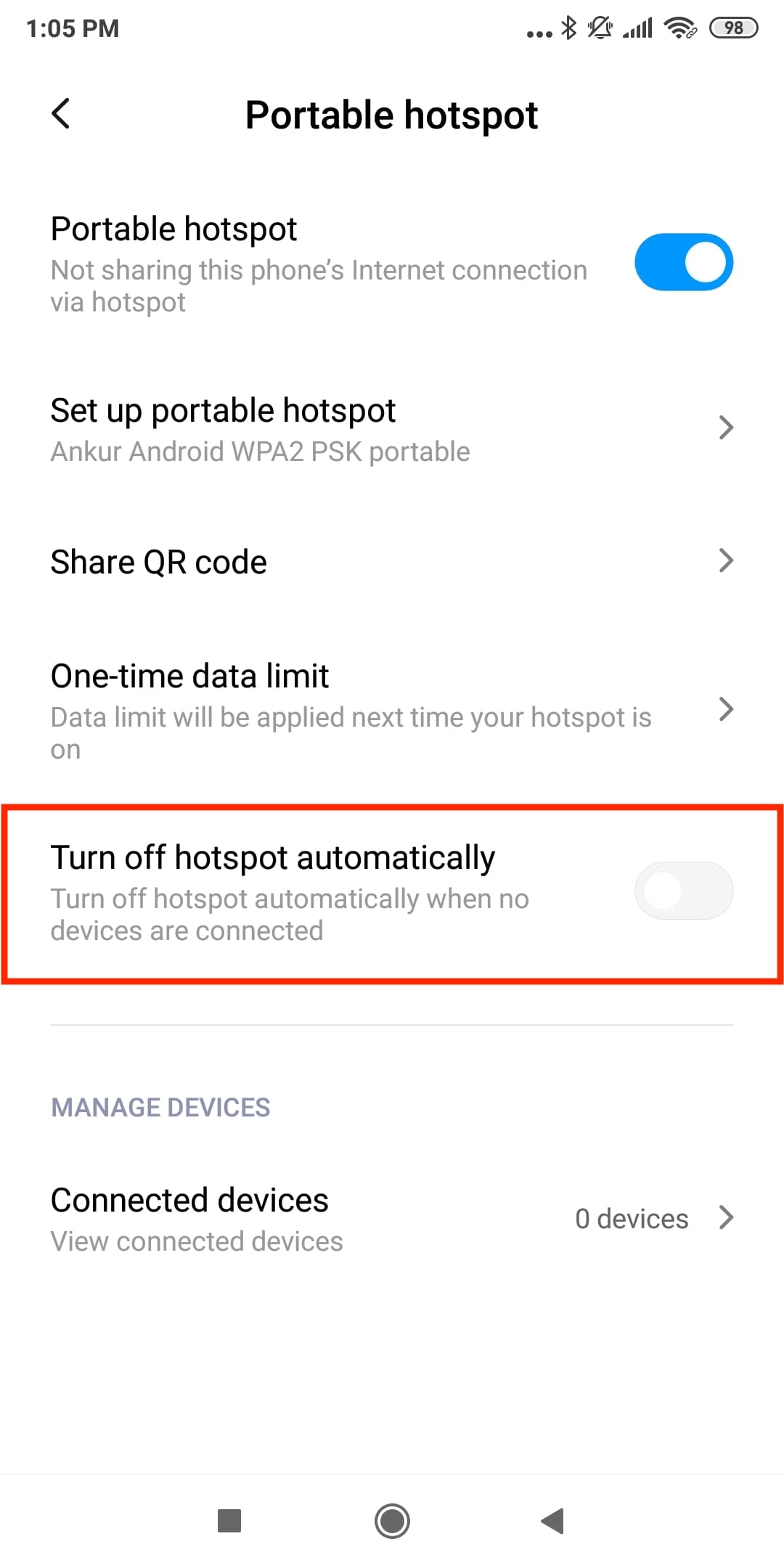
Some public Wi-Fi networks may automatically disconnect you or restrict internet access if you’ve exhausted your allocated time or data limit.
Update your iPhone to the latest version of iOS
In case your iPhone is not updated, old bugs may be causing Wi-Fi disconnections. To download and install the latest version of iOS, go to the Settings app > General > Software Update and follow the onscreen instructions.
Forget and rejoin Wi-Fi
Forgetting and rejoining a network renews the connection, which may fix disconnection issues, but be sure you know the Wi-Fi network password (you can view it on your iPhone or iPad)
Here’s how to forget and rejoin a Wi-Fi network:
- Go to the Settings app and tap Wi-Fi.
- Tap the info button ⓘ next to the name of the Wi-Fi network.
- Tap Forget This Network > Forget.
- Restart your iPhone.
- Go back to Settings > Wi-Fi and tap the network name, then enter the network password to connect.
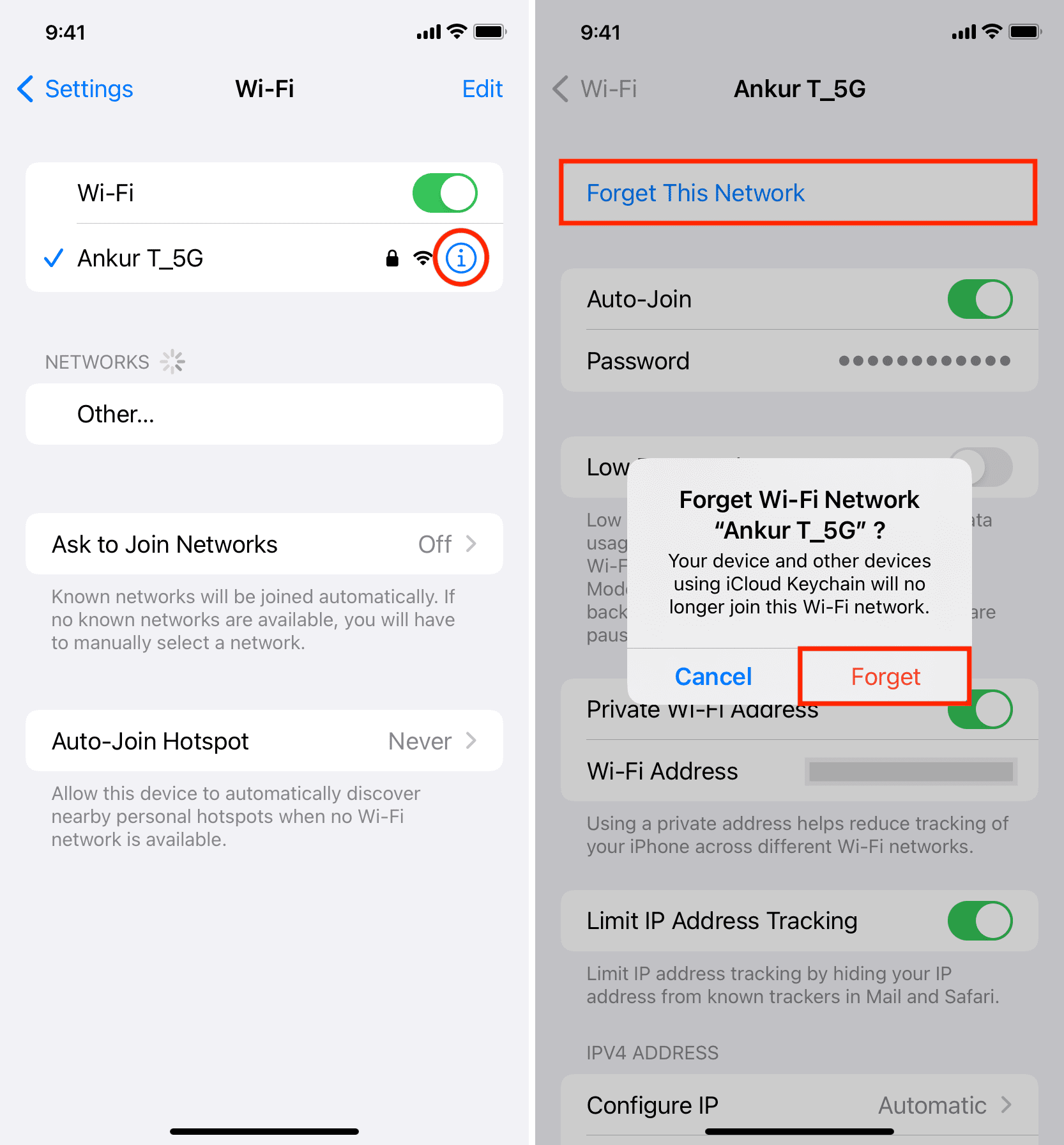
Reset your iPhone network settings
Resetting network settings is a proven way to fix Wi-Fi or cellular connectivity issues. And since the problem you’re facing is related to both, go ahead and reset the network settings on your iPhone.
Temporarily turn off Limit IP Address Tracking
- Open iPhone Settings and tap Wi-Fi.
- Hit the info button ⓘ next to the connected Wi-Fi name.
- Turn off Limit IP Address Tracking.
- Restart your iPhone and it should no longer switch from Wi-Fi to cellular.
Check if your ISP is having issues
Your internet service provider (ISP) may be facing intermittent issues leading to patchy internet connectivity. Because of that, your iPhone or iPad may stop using Wi-Fi, fall back to cellular data, and keep doing it repeatedly.
Contact your internet provider, or ask your neighbor who uses the same ISP, or perform a web search for ‘Is your internet provider name not working in your area name,’ for some help.
Is your router stuck in a reboot loop?
If the power adapter, the main switch, the power cable or the power outlet are having issues, the router may turn off and on automatically in an endless reboot loop, leading to Wi-Fi connection drops on your iPhone. Those living in areas with frequent electricity outages whose router isn’t plugged into a power outlet with backup power may want to buy a power bank for a Wi-Fi router to avoid downtime.
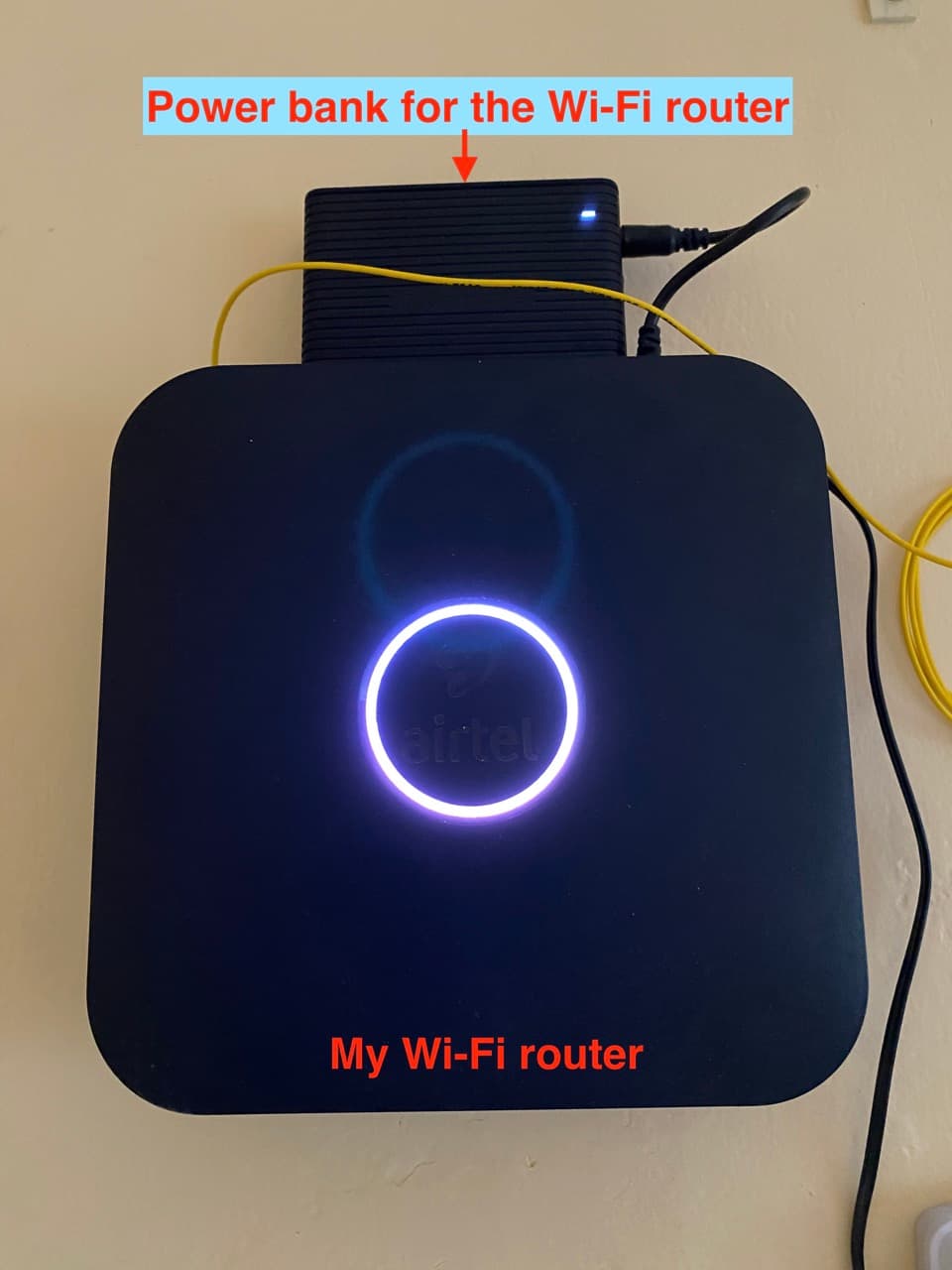
Update your router firmware
Like your iPhone, many recent Wi-Fi routers receive software updates. If your Wi-Fi keeps disconnecting for multiple devices, find the firmware update instructions on the back of the router or the manufacturer’s website.
Get a better Wi-Fi router or boosters to maximize range
Last but not least, if your iPhone keeps disconnecting from Wi-Fi and falling back to cellular only at a specific location like your house or office, reset your router and set it up from scratch. Otherwise, you may need to purchase a more powerful Wi-Fi router, extend its coverage with a range extender, or set up a mesh Wi-Fi network.
Which of the above solutions worked for you?